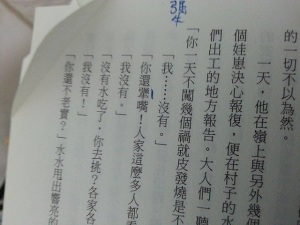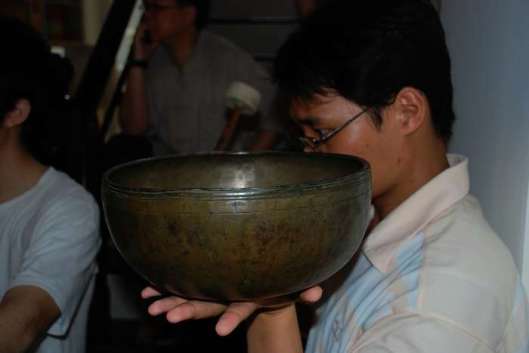犟 jiang4 (/qiang3)
I found this variant of 強 in a traditional character version of a mainland Chinese novel (《馬橋詞典》 Dictionary of Maqiao by 韓少功 Han Shaogong). This character is not listed in the Taiwanese Ministry of Education dictionary although it is listed in the variant dictionary. I was surprised to see the character in a traditional character book, because it incorporates the simplified version (or variant) of 強: 强 above 牛 (ox). Lots of simplified characters were adapted from variants or commonly used shorthand however, so it’s not overly unusual. At first I thought it might be an amusing glitch thrown up in the process of transcribing the simplified characters into traditional characters, but after checking the original on Google Books, it seems to have been a choice by the author:
In the Taiwan variants dictionary it is weirdly listed as a variant of standard character ![]() although this character cannot be typed – as it automatically switches back to 犟 when typing in zhuyin 注音 and Cangjie 倉頡.
although this character cannot be typed – as it automatically switches back to 犟 when typing in zhuyin 注音 and Cangjie 倉頡.
Neither are listed as variants of 強 either. So I can only assume that Taiwan chose to replace this character with 強 in daily usage, although it still exists in its simplified form.




